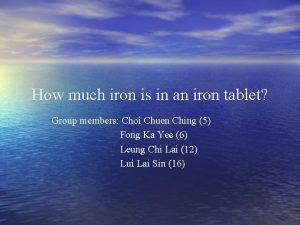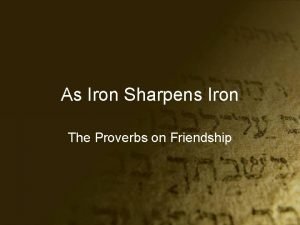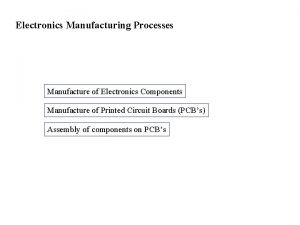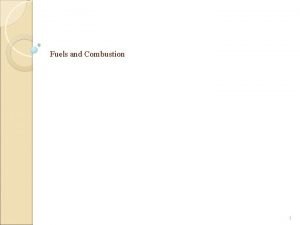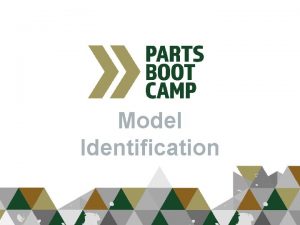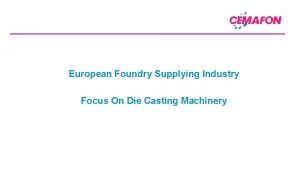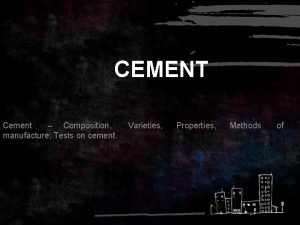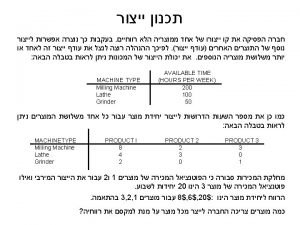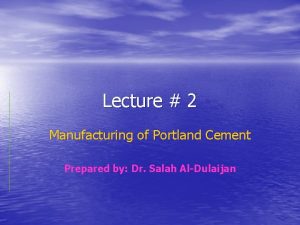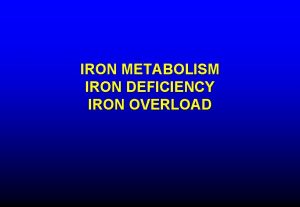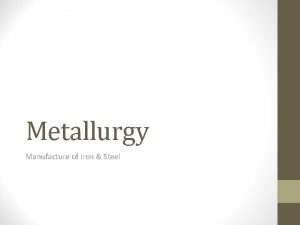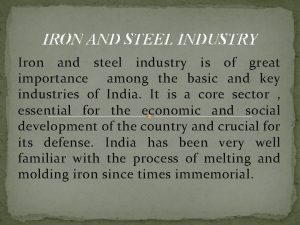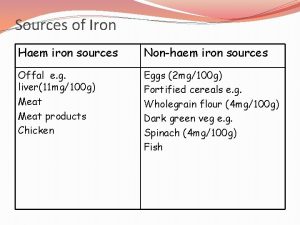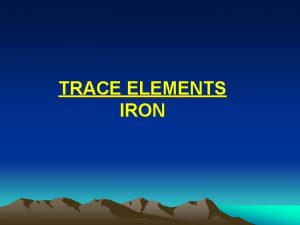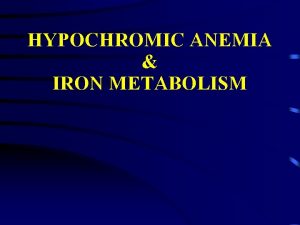THE INDUSTRIAL REVOLUTION The Iron Industry The Manufacture










- Slides: 10

THE INDUSTRIAL REVOLUTION The Iron Industry

The Manufacture of Iron had been made in the traditional way since Roman times Ü Pig Iron and Cast Iron were smelted using charcoal as fuel Ü Charcoal is wood that has been burned very slowly Ü Wrought Iron was made from pig iron using a Forge Ü

Problems facing the Iron Industry in 1700 Ü Ü 1. 2. Charcoal had become very expensive and rare because of the other demands on timber (ships, building…) There was an increase in the demand for iron : Warfare-guns, cannon… Industry-steam engines…

The Darbys of Coalbrookdale Abraham Darby I 1677 -1717 By 1700 iron had become very expensive and difficult to produce Ü Abraham Darby I wanted to find a cheaper substitute for charcoal as the fuel to heat the Blast Furnace Ü He began to search for a good site for an iron works Ü

Coalbrookdale Ü Ü 1. 2. 3. In 1708 Abraham Darby I took over a disused iron works at Coalbrookdale in Shropshire It was a good site because: There was water for power The River Severn for transport Local supplies of iron ore, coal, wood and

Coke Smelting 1709 Abraham Darby I’s great discovery was that Coke could be used instead of charcoal Ü Coke was baked coal, but contained little sulphur and was mainly carbon Ü Coalbrookdale now expanded into a great producer of cheap pig iron and cast iron Ü

The Ironbridge Abraham Darby II greatly expanded the business Ü He improved the coking ovens and the power of the bellows on the blast furnace Ü Abraham Darby III built the Ironbridge in 1779 in collaboration with John “Iron Mad” Wilkinson Ü The bridge was a symbol of the potential of iron as a material Ü

Henry Cort, Puddling & Rolling 1784 The Darbys had improved the production of pig/cast iron Ü Forging wrought iron was still done by traditional means Ü Henry Cort invented the Reverberatory Furnace in 1783 for “Puddling” pig iron Ü With his Rolling machine (1784) he could now produce as much wrought iron in one Ü

Other Great Ironmasters Ü John “Iron Mad” Wilkinson – invented his own casting methods and new uses for iron (e. g. his own coffin!) Ü Richard Crawshay of Cyfartha, South Wales – adopted Henry Cort’s Puddling and Rolling process on a huge scale Ü James Neilson of Scotland – invented the “Hot Blast” making the Blast Furnace 3 times hotter, making better pig iron Ü James Nasmyth invented steam-powered hammer 1829 (shown here)

Conclusions Ü Ü Ü By the middle of the 19 th. C the demand for and supply of iron had grown massively Iron was used for ships, machines, steam engines, bridges, railways, weapons, tools, pipes, chains, and many domestic uses Steel making started to improve after 1850 The iron industry moved from wooded areas like The Forest of Dean and the Weald of Sussex to the coal fields, particularly in South Wales and Yorkshire The growth of the iron industry caused an increasing demand for coal
 Mass of iron in an iron tablet
Mass of iron in an iron tablet Iron sharpens iron friendship
Iron sharpens iron friendship Components manufacture
Components manufacture Otto hoffman by product oven
Otto hoffman by product oven Payback chapter 23
Payback chapter 23 Nissan forklift models by year
Nissan forklift models by year Foundry machinery manufacture exporter
Foundry machinery manufacture exporter Manufacture of cement
Manufacture of cement Fibre terylene material
Fibre terylene material A firm is planning to manufacture a new product
A firm is planning to manufacture a new product Manufacture of portland cement
Manufacture of portland cement
